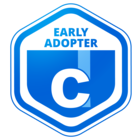Hello,
From time to time, when we create a new Course, we put news about it on our Docebo’s main page (in the custom-made News section).
We always include an Enrollment Link (deep link) to said course; however, at the moment it is hard for us to tell how many clicks it generates. Do you know about any way to keep track of this? Perhaps using a third-party tool to change the link while redirecting?
Unfortunately, Google Analytics doesn’t show us any results for Enrollment Links and standard link to the course is not exactly the same as it also shows the general amount of views (from my courses and course catalog sections).
Is it possible to track visits/clicks for Enrollment Links?
Best answer by Adam Ballhaussen
Log in to Docebo Community
Enter your email address or username and password below to log in to Docebo Community. No account yet? Create an account
Docebo Employee Login
Enter your E-mail address. We'll send you an e-mail with instructions to reset your password.





